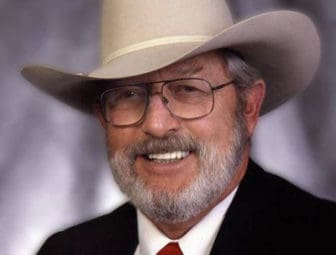COMMENTARY: Secretary Ryan Zinke came to New Mexico recently to gather input on the review process required by President Donald Trump on two New Mexico national monuments designated by proclamation. The authority was granted to the presidents to designate objects as the national monuments under the Antiquities Act of 1906.

Courtesy photo
Jerry G. Schickedanz
The process calls for review of the legality of the designation as to whether the objects were properly identified and if they were located on the smallest area needed for proper care and protection of the objects. The objects are required to be on federally controlled land.
He was also gathering input on the effect on federal land and multiple-use policy; effects on state and private land; concerns of state, tribal and local governments affected by the designation, including the economic development and fiscal condition of the states, tribes and localities; availability of federal resources to properly manage the designated areas; and any other factors the secretary deemed appropriate.
It is alleged that he didn’t talk to everybody, but listened to “the usual suspects” who have “the loudest voices in the room when it comes to this issue. He undoubtedly knew what position each person had.”
The only message I have heard the proponents say is, “We are for the monument and don’t downsize.” As far as I know, Zinke visited with the governor, local governments, tribal representatives, veterans, Friends of the Organ Mountains, ranchers, and officials concerned with flood control, watershed management, rights of way, border security, and public safety. In my estimation, he visited with a broad spectrum of local citizens to hear their concerns and not whether people were for or against the monument.
He undoubtedly heard of everyone’s support to protect the “Organ Mountains.”
The New Mexico state attorney general has announced that he would go to court and challenge any changes to either the Organ Mountains-Desert Peaks or Rio Grande Del Norte national monuments. The AG’s office indicated that under the Antiquities Act, President Obama exercised his right to establish the two monuments, but that another president doesn’t have the authority to scale any monuments back.
My research of the history of presidential proclamations revealed that presidents have both diminished and increased acreages of established national monuments. In fact, seven presidents have reduced acreage 18 times. Downsizes ranges from a few acres to over 300,000 acres. Fourteen presidents have increased the size of monuments 58 times. These changes have occurred on 153 national monuments, from 1917 until 2014.
As far as I know, these presidents were not challenged in court for their actions. However, the current president is threatened to be challenged in court if he does what seven previous presidents have already done. I think the precedent has long been established during the last 97 years.
The visit by the secretary was tightly controlled, as are all visits by dignitaries from Washington D.C. Schedules are generally not published in advance for security and other reasons. I feel the secretary came with legitimate reasons and left with information he needs to make a recommendation, not a popular vote for or against the monument.
There are always two sides to an argument. If it is not going your way, then it is unfair. I believe the secretary came to listen to what the issues are and he will make a recommendation to President Trump. The president will issue a new proclamation to either change the size or leave the designations alone. It is time to wait for the decision, not to complain about the process that has occurred, which I contend was fair.
Jerry G. Schickedanz is a distinguished chair of the Linebery Natural Resource Policy Center at New Mexico State University. Agree with his opinion? Disagree? We welcome your views. Learn about submitting your own commentary here.